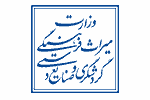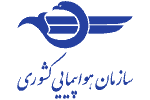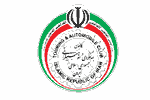Blue Mosque, also known as Kabood or Goy Mosque, is a famous heritage site in Tabriz, Iran. The mosque and some other public buildings were constructed in 1465 upon the order of Jahan Shah, the ruler of Kara Koyunlu (Qara Qoyunlu) dynasty (1351-1469) who chose Tabriz as the capital of his kingdom.
The only major Kara Koyunlu structure still standing in the dynasty’s capital, it illustrates the artistic brilliance of Turkman Tabriz. The extant tilework documents artistic connections with contemporary architecture in Timurid Khorasan and in the Ottoman Empire.
Originally built in 1465, the mosque was among the most glorious buildings of its era. Once built, artists took a further 25 years to cover every surface with dark and bright blue tiles and intricate calligraphy. This precious work of Islamic period is known as “the Turquoise of Islam”, since it was decorated in turquoise-colored tiles for which it is nicknamed.
The most outstanding features of the Blue Mosque in Tabriz include its special blue tiles in northern façade, its large dome that spans a large area of about 30 meters by 30 meters and its double-layered roof made of bricks and some special limestone. The diverse Kufic and Thulth scripts, the exquisite arabesque patterns, and the admirable chromatic of these facades, which are truly stupendous, were created by Mohammad-ol-Bavab, the famous calligrapher. The walls (inside and outside) had been covered with mosaic tiles.
Inside the mosque, the lighting formed up of the combined daylight beams coming through the well-located windows seems quite fascinating. Date of construction and the name of its founder have been curved in the bas-relief of the main entrance. There is a mausoleum in the southern section of the mosque where the builder, Jahan Shah, is buried.
Blue Mosque, the only remnant of the glorious past in Tabriz, survived one of history’s worst-ever earthquakes in 1727, but collapsed in a later quake in 1779, leaving only the entrance Ivan.







